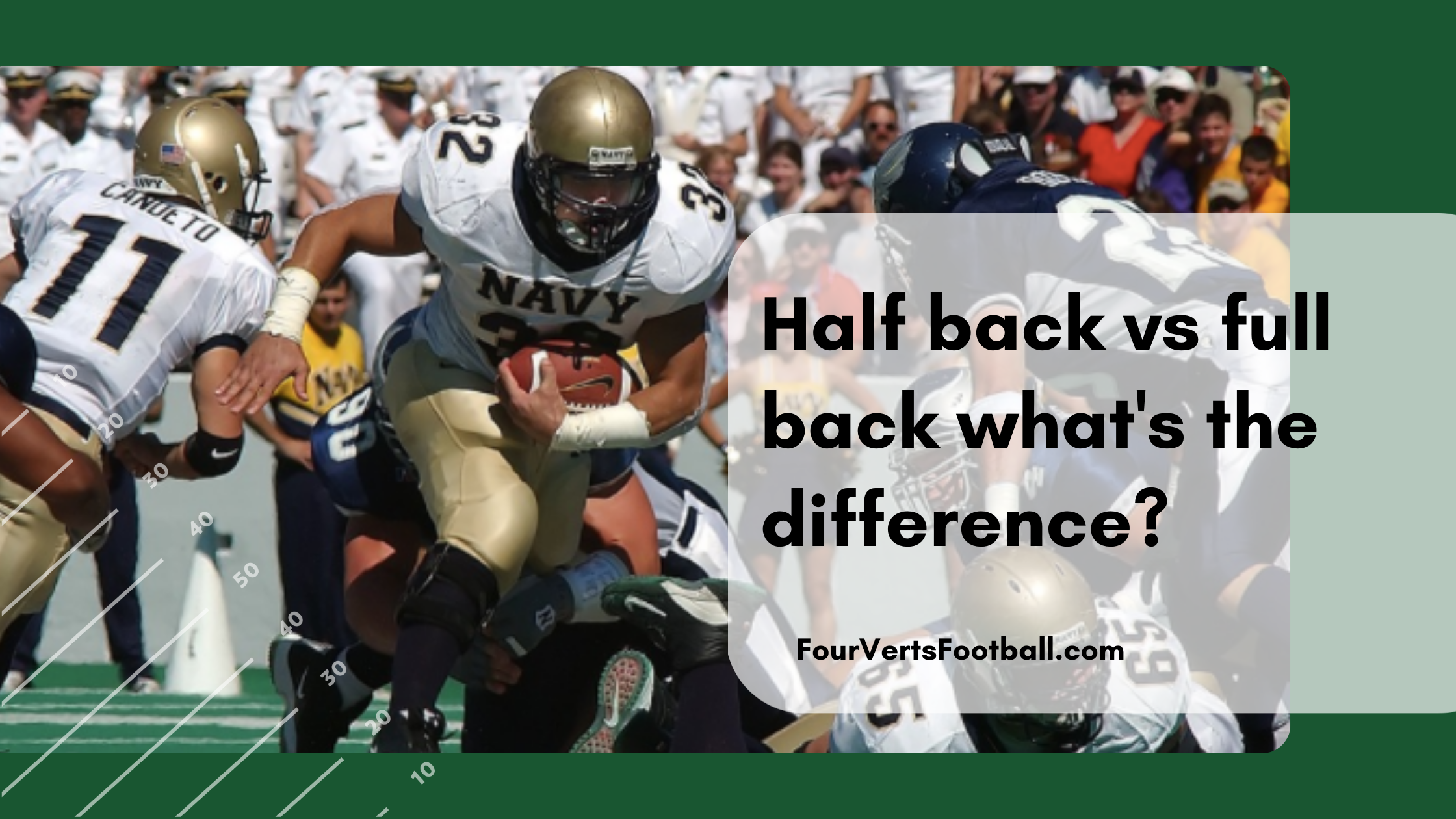The halfback and fullback positions in football are two that are known for rushing the football but what sets these positions apart?
This article is going to break down all the differences between the halfback vs fullback in American football.
The main difference between halfbacks and fullbacks is their stature and their in-game assignments. Fullbacks are often shorter and noticeably bulkier than most halfbacks. While halfbacks often have slighter builds and rely more on their speed.
Half Back VS Full Back Responsibilities
Blocking
When it comes to blocking the halfback and fullback have different roles in the offense. Often times it is the fullbacks responsibility to act as a lead blocker for running plays.
This means the fullback will run through the hole first and block the first defender he sees. The halfback will follow the fullback through the hole and carry the ball as far down the field as possible.
Halfbacks still have blocking responsibilities on some plays but in most cases, this happens in pass protection. This is notably different from the fullback position which participates in pass blocking but is known for its run blocking.
Rushing The Ball
Both fullbacks and halfbacks run with the football but again the frequency in which they do it is very different.
Halfbacks are considered the main ball carrier for the football team with three down backs get upwards of twenty-five carries throughout a ball game. Fullbacks on the other hand carry the football but get very few opportunities.
In fact, most offenses will go an entire game without their fullback getting any carries at all.
In short, both positions run with the ball but the halfback is responsible for being the main rushing weapon while the fullback is just an accessory to the run game.
Receiving
When it comes to receiving the difference between halfback vs fullback is similar to the run game. Both of these positions can be expected to catch passes out of the backfield but the halfback is going to do it much more frequently.
The halfback position can safely assume to get several targets throughout each game. And depending on the offense the halfback can be one of the main weapons in the receiving game.
Fullbacks can receive passes and will have designed routes to run on passing plays. Though this position can expect to see only a few targets or even zero targets throughout an NFL game.
Difference In Stature
Size and stature is another way in which the halfback and fullback position differ. Running backs can come in many different sizes depending on the role that they play for the team.
But when it comes down to average you are going to find fullbacks are noticeably heavier. Fullbacks tend to carry more muscle mass on their body which increases their total weight.
This increased weight allows them to be better blockers in the running game. Halfbacks on the other hand tend to stay lean in order to keep up their speed.
You can expect your average halfback to be noticeably smaller and more agile than your average fullback.

